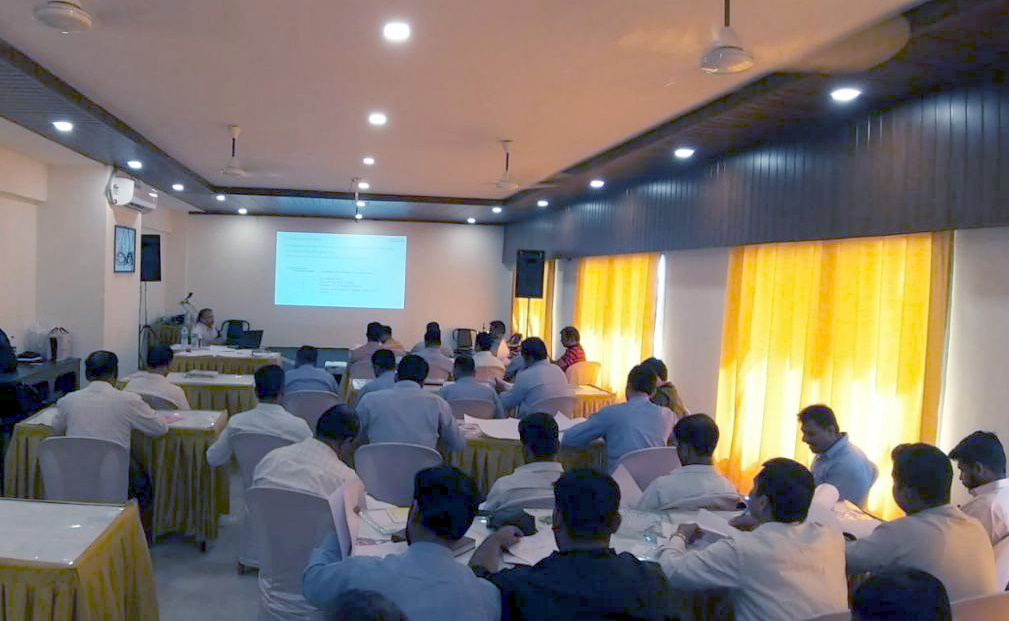HAZOP- Hazard and Operability Study | Information & Certification
What is HAZOP?
How do I get HAZOP Certification?
How do I become a HAZOP Leader?

What is HAZOP?
HAZOP is short for Hazard and Operability Study.
(You can take a look at the HAZOP Training Course here to know more)
It was introduced in the 1960s by the then ICI (Imperial Chemical Industries of UK) to identify hazards and operability issues in their plants, as well as assess risks and recommend measures to prevent mishaps. It quickly became a popular risk assessment technique used in the process industry. It is a structured technique that employs brainstorming by a multidisciplinary group of professionals who study plants and processes, evaluate what can go wrong and suggest safeguards to reduce the overall risk of an unwanted incident.
This risk analysis technique is not used only by companies in the process industries such as Oil and Gas, Petroleum refining, chemicals manufacturing, pharmaceutical plants and similar facilities but also by many companies in areas such as Electrical Systems, Railway Safety and Software. These studies are also used to evaluate deviations that may result in non operation or degraded operation of a plant’s control system or safety instrumented system, due to events such as a cyber attack. This variation of the technique is known as CHAZOP and it is included in the Abhisam courses.
How is it carried out in practice?
Application of Hazard and Operability Study for any plant or process is a team effort. Typically, professionals from different disciplines of engineering, operations safety professionals form a team to carry out a review via a structured brainstorming exercise that identifies hazop nodes, makes use of certain known and previously agreed hazop guide words, to identify possible deviations from the design intent in a process and suggest safeguards to reduce the likelihood of these deviations occurring (and thus accidents or unwanted incidents). Accidents can result in damage to assets such as plant equipment, or injuries to people or loss of containment resulting in destruction of the environment.
The team can assess the risks inherent in the process and then recommend controls to mitigate any potential problems due to each deviation. This goes a long way in being able to prevent accidents and undesirable incidents.This technique reduces operability problems too, thus it becomes better operable by workers and results in better performance.
A deviation from the design intent can occur due to multiple causes such as an equipment failure (for example low pressure due to a piping rupture), or human error problems due to wrong operational actions or improper maintenance, or even sabotage due to cyber attacks. This can lead to unsafe situations.
This exercise is a structured approach. The procedure will take several steps as below:
1. A HAZOP Study team (or teams) are formed under a HAZOP Leader or HAZOP Chairman. This team is multidisciplinary and should include employees with different backgrounds including production, safety, engineering, design and Instrumentation/Control systems.
2. The leader has to plan the study by first understanding the scope of work, deciding on the methods that will be used, estimating the work and time needed to complete it, based on the input documentation, which may include piping and instrumentation diagrams, plant operating procedures, equipment design drawings and plant layout drawings.
3. Team members first identify the nodes (think of them as sections of the plant ) and the study is carried out for each node, for all stages of the process, by using previously decided guidewords.
Depending on the type of HAZOP these guide words will be different.
Note that there are many different types of guide words available and explained in the Abhisam courses, including for studying human errors as well as control systems. Some are used for PHA at the plant concept stage, some are used at pre startup safety review stage and some are used at decommissioning stage.
4. The team under the guidance of the leader, then prepares a report that has all the details of the study with their recommendations and submit it to the asset owner/operator.
5. The study notes, worksheets and reports may be subject to further reviews and audits by experts.
6. Finally the recommendations are implemented by the asset owner and may involve modification/addition of equipment, modifications to standard operating procedures, engineering and administrative controls.
The team members are known as HAZOP Professionals and the leader, who leads, directs and manages the entire study is known as a HAZOP Leader or HAZOP Chairman who has expertise in the method, as well as one who can manage it well to keep costs within the budget.
The team should not only have knowledge of the HAZOP method and be experts in it, but some members should also have a production background and be familiar with the workplace where the plant is located. So they must be having adequate experience of typical unit operations of the plant. They must be able to imagine changes and scenarios that may occur during a deviation from the design intent. This ensures that the quality of the study is maintained.
No special tools are needed, however there are a number of software tools for documentation and report creation available.
What are the different types of HAZOP?
There are different types, based on the stage at which the plant is at (concept stage, design stage, detailed engineering stage) as well as whether this is for a greenfield or brownfield project, or if it is for plant decommissioning.
Is this technique a legal compliance requirement?
It depends on the jurisdiction where the facility is located. Under the OSHA Process Safety Management Standard (1910.119 – Process safety management of highly hazardous chemicals) use of this technique for Process Hazard Analysis (PHA), or an alternative one such as What-If Analysis or HAZID, is mandatory. Insurance companies can also insist that the company’s risk management process includes such techniques. You need to carry out PHA after every plant modification.
How do I get HAZOP certification?
Any technical professional who is knowledgeable about the Hazard and Operability technique either via formal training in the method, or by virtue of having participated in many sessions, is referred to as a certified Hazop Professional.
The easiest and fastest way to become a certified Professional is to enroll in the Abhisam Course. Once you enroll in the self paced online e-learning course, complete all the modules and pass the exam, you will earn a certificate of competency as a Professional and can easily participate in any study as a team member.
How to become a HAZOP Leader?
Becoming a Leader requires minimum experience of at least 5 years and a familiarity with the technique, as well as good people management skills.
The easiest and fastest way to become a Certified Leader is to enroll in our Leader course. This is an entirely online, self paced course that can be taken by experienced professionals, who have participated in at least one Study as a team member, or have undergone formal training in the technique (such as the Abhisam Professional course). Additionally they need to have at least a Bachelor’s degree in any technical subject (or a Diploma) with minimum 5 years experience in any process industry. They can then apply to take the course.
After completing all modules in the course (10) passing the associated exam and successfully submitting the given assignment the learner gets awarded the designation, certificate and electronic badge.
Abhisam HAZOP Training Courses
HAZOP Professional
This Abhisam course is for those who wish to learn how to assess process hazards using Hazard and Operability study and qualify as a HAZOP Professional. This fully online training course also includes CHAZOP, which is used to analyze Automation and Control systems in the process industry that are DCS, PLC or SCADA or SIS.
More Info on the HAZOP Training course
HAZOP Leader
This is an advanced course meant for industry professionals, who wish to be certified.
This course requires that the participant be an already experienced professional, having at least 5 years of industry experience after completion of a Bachelor’s degree in any Scientific, Technological or Engineering area. who has either already completed and passed the Professional Level course (see above) OR have had another equivalent formal training from any other course provider, along with sufficient experience of being a participant in these safety studies.
After enrolling in the course the participant needs to complete a set of learning modules, pass the associated exam and submit an assignment that will be given as part of the course.
On successful completion, the participant gets awarded the Leader certificate and an electronic badge.
The Certificate and Badge are lifelong and do not expire.
Instructor led Workshops

Abhisam occasionally conducts both public and private training workshops in the traditional Instructor led mode in various locations.
Instructor led workshops is features hands on exercises in various Case Studies from process plants and a simulation of an actual study.
All participants earn a Certificate of participation.
Currently this is available only on request for on site training for companies.
Latest White Papers, News and Useful information
- HAZOP Leader/HAZOP Chairman Program is now fully online.
- HAZOP Study– The three things that you must consider
What is Hazard and Operability Study?
This easy to understand guide explains the method in a very easy to understand way.
The Video below also explains the basic technique.
What is CHAZOP?
This is a variant that is used to carry out risk assessment of the Control System. Since many of the mitigations suggested in a typical Study involve the Computer based Control System of the plant, it is important to know how well it can function in case of deviations. Find out more about CHAZOP here.
Contact Us by filling the form below OR call us OR email


